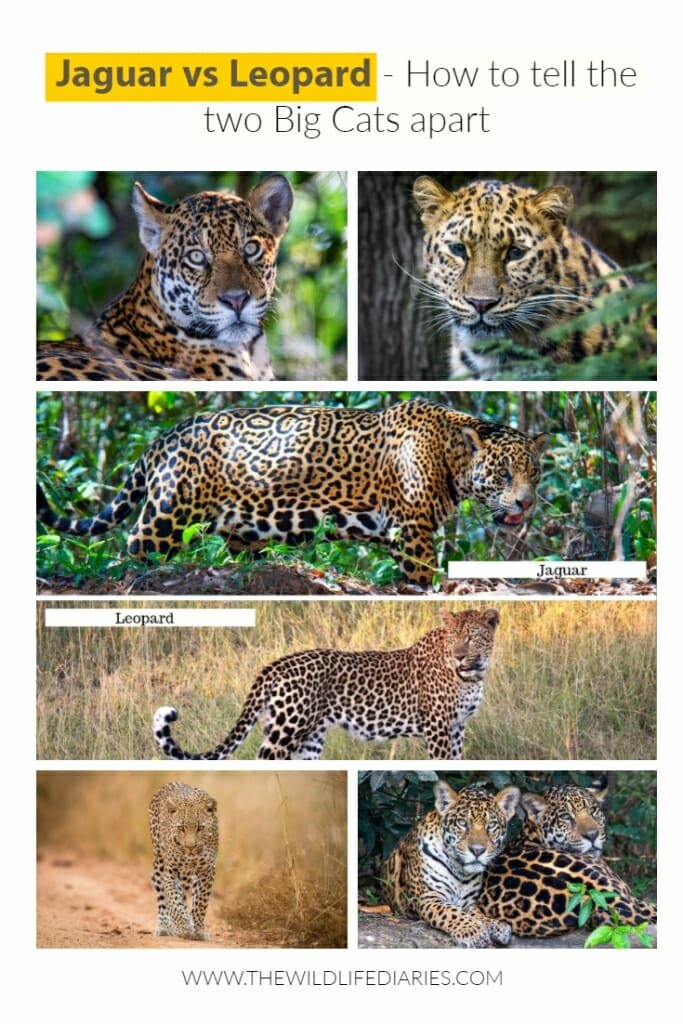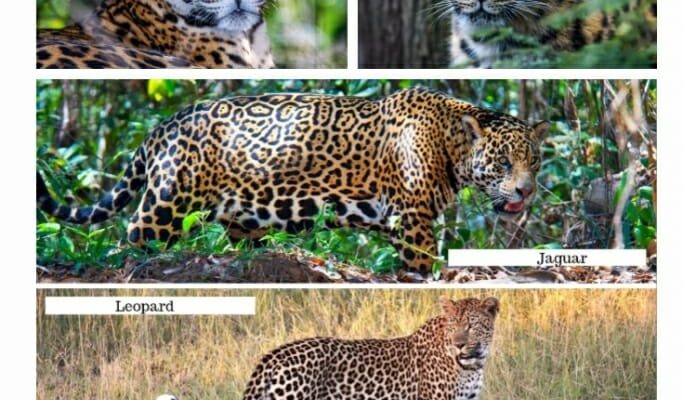
So, let’s dive into the animal kingdom and explore 10 animals similar to the jaguar. We’ll take a close look at their unique traits and how to spot the differences. Whether you’re a wildlife enthusiast or just curious about these amazing creatures, this guide will help you appreciate the fascinating world of big cats and their look-alikes.
1. Leopard
The leopard is one of the most famous felines and shares a lot in common with the jaguar. Both belong to the genus *Panthera*, meaning they’re like distant cousins in the big cat family. The biggest difference? Their spots. While jaguars are known for their larger rosettes that often have a central spot, leopards have smaller, more closely spaced rosettes without the central dot.
If you ever come across a leopard, you might notice that they prefer more open savannas and grasslands, in contrast to the jaguar’s jungle habitat. This means they might be spotted lounging on a tree branch or stealthily stalking prey in the tall grasses. So, if you’re trying to identify the two, remember: larger rosettes with central spots mean jaguar, while smaller rosettes mean leopard.
2. Cougar
Also known as the mountain lion or puma, the cougar is another big cat that comes to mind. Size-wise, cougars are a bit larger, easily reaching about 8 feet long from nose to tail. While jaguars are characterized by their robust build and short limbs, cougars have a more slender, agile physique.
One telltale sign is the coloration: cougars sport a tawny coat that lacks the distinct spots of the jaguar. Instead, their fur is uniform, giving them a sleek appearance. You’ll typically find cougars in a variety of habitats, from forests to deserts, while jaguars stick mostly to dense rainforests. If you’re on the lookout, remember that cougars are more versatile in habitat than their rainforest-loving cousins.
3. Caracal
The caracal is smaller than both the jaguar and the cougar, but it’s just as impressive. With its tufted ears and sleek body, the caracal may resemble a miniature version of these larger cats. What really sets it apart, though, is its unique ear tufts that give it a regal look.
In terms of behavior, caracals are known for their incredible jumping ability, often leaping up to 10 feet in the air to catch birds. Unlike jaguars, which are primarily solitary, caracals can sometimes be seen in pairs or small groups. So, if you’re trying to decide if you’re looking at a jaguar or a caracal, keep an eye on those ears and the overall size—caracals are much smaller and have distinctive tufts.
4. Ocelot
Ocelots are smaller wild cats that might remind you of jaguars due to their similar spotted coats. They have a beautiful, intricate pattern of spots and stripes that can vary quite a bit in color from light brown to greyish. However, ocelots are significantly smaller, weighing about 30 pounds compared to the jaguar’s robust frame.
The habitats of ocelots also overlap with jaguars, as they thrive in dense foliage and tropical habitats. They tend to be more active at night, relying on their keen eyesight and excellent hearing to hunt small mammals and birds. If you’re curious about distinguishing between an ocelot and a jaguar, just remember: size and coat pattern are key, as ocelots are much smaller and less stocky.
5. Snow Leopard
With its thick fur and large size, the snow leopard is another cat that can be confused with the jaguar. However, unlike the warm, vibrant rainforests where jaguars roam, snow leopards thrive in the frigid mountains of Central Asia. They have a unique smoky-gray coat with black rosettes and spots that help camouflage them against their rocky surroundings.
Snow leopards are also more solitary and elusive than jaguars, adapting perfectly to life in harsh mountain terrains. Their long tails serve a unique purpose—keeping balance while they navigate steep cliffs. If you’re trying to separate the two, focus on the habitat and coat color. Snow leopards have lighter, fluffier fur and live in cold climates.
6. Tiger
Tigers are the largest big cats and known for their distinctive orange coat with bold black stripes. While the jaguar tends to be more stocky and muscular, tigers have a more elongated shape. Both are incredibly powerful hunters, yet their habitats differ widely; tigers prefer dense forests and swamps.
Interestingly, while both animals are solitary creatures, tigers are often more territorial. If you come across a large cat with orange fur, you can confidently say it’s a tiger and not a jaguar. Just remember, jaguars have spots and live in different environments compared to the tiger’s stripes.
7. Asiatic Leopard
The Asiatic leopard is similar to the African leopard but has its own distinct characteristics. They are slightly smaller and have narrower rosettes. They share the lush habitats of the jaguar but are found primarily in India and parts of Southeast Asia.
While their coat patterns are similar, you can often differentiate them by their smaller size and less robust build compared to the jaguar. Additionally, Asiatic leopards tend to have more of a pale, yellowish hue compared to the jaguar’s golden coat. A key takeaway? Size and rosette shape are the easiest ways to tell them apart.
8. Clouded Leopard
The clouded leopard is a fascinating feline known for its unique cloud-shaped spots. While they may be smaller than jaguars, their coat is just as stunning, featuring a beautiful mix of light yellow and brown. They thrive in the treetops of Southeast Asia, which is quite different from the jaguar’s ground-level lifestyle.
One of the coolest features of clouded leopards is their long tail, which helps them balance as they navigate the branches. If you spot a smaller, spotted cat with a long tail and a cloud-like pattern, it’s likely a clouded leopard and not a jaguar. Remember, it’s all about those distinctive spots and their arboreal lifestyle.
9. Fishing Cat
The fishing cat is a lesser-known species that might catch your eye due to its resemblance to smaller big cats. Their coat is similar in coloration to the jaguar but is much smaller in size and has a unique pattern of vertical stripes. Fishing cats are semi-aquatic and often reside near swamps, rivers, and wetlands.
These cats are excellent swimmers and love to hunt for fish, which sets them apart from jaguars that primarily hunt on land. If you’re ever unsure about what you’re looking at, check for size and habitat: fishing cats are much smaller and often associated with water.
10. Rusty-Spotted Cat
Finally, the rusty-spotted cat is a tiny feline that packs a lot of charm into its small frame. While they might resemble miniature versions of the jaguar, they are one of the smallest wild cats in the world, about the size of a domestic cat. Their coat features a distinct rusty color with spots that remind some of jaguars but are much smaller and less defined.
You’ll typically find these cats in the forests of India and Sri Lanka, where they thrive in dense underbrush. They are nocturnal hunters, much like many of the other cats on this list. The key to identifying a rusty-spotted cat? Size is everything—if it’s small enough to fit in your lap, it’s definitely not a jaguar!
In conclusion, while the jaguar reigns as a unique and remarkable big cat, numerous other animals can somewhat resemble it. By paying attention to their sizes, habitats, coat patterns, and behaviors, you can easily learn to tell them apart. Every species has its own special traits, making the animal kingdom an endlessly fascinating place. So next time you spot a big cat in the wild or a documentary, you can have a fun, informed chat about not just the jaguar, but its remarkable relatives too!

